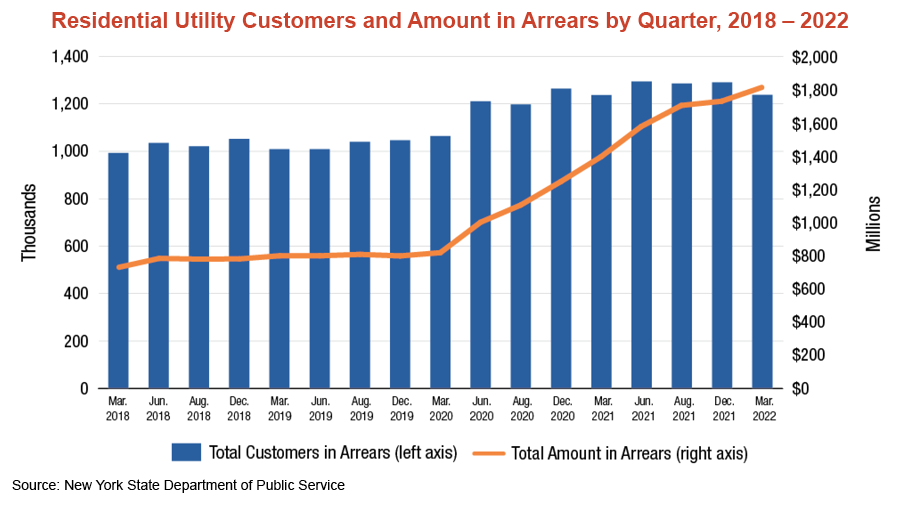DiNAPOLI: NUMBER OF NEW YORKERS BEHIND ON UTILITY BILLS SOARED DURING PANDEMIC
One in Eight Residential Customers Statewide Face Overdue Utility Bills, 60% of Customers in Arrears are from NYC and Long Island
The devastating number of job losses caused by the COVID-19 pandemic caused a significant increase in the number of residential customers owing money to their utility companies, with one in eight customers in arrears as of March 2022, according to a reportreleased today by State Comptroller Thomas P. DiNapoli. More than 1.2 million customers statewide owed $1.8 billion with customers from New York City and Long Island comprising 60% of those in arrears and 68% of the amount owed.
In the first quarter of 2022, the number of customers behind on their bills fell by about 50,000 to 1.2 million while the total amount owed grew to $1.8 billion, an increase of close to $1 billion from March 2020. The average amount customers owed over this period doubled from $768 in March 2020 to $1,467 in March 2022.

“The pandemic’s effects continue to be felt in multiple aspects of life, including the elevated number of New Yorkers who continue to have trouble paying their utility bills,” DiNapoli said. “Failure to pay these bills may result in service shutoffs, which increases economic stress on families and can damage local economies by reducing household spending, leading to job losses. State lawmakers and the Public Service Commission have acted to provide meaningful relief to low-income customers through the Utility Arrears Relief Program and the Phase 1 Arrears Reduction Program, and should continue to consider mechanisms to help utility customers that cannot pay their bills.”
DiNapoli’s report, includes:
- Arrears by state’s largest electric and gas utilities;
- Regional breakdown of residential customers and amount in arrears; and
- Allocation of state funds and authorized cost recovery.
Analysis
Economic and Policy Insights: Distribution of Utility Arrears in New York State
Posted: July 15th, 2022 under Heathcare News, Peru/Regional History, State Government News.
